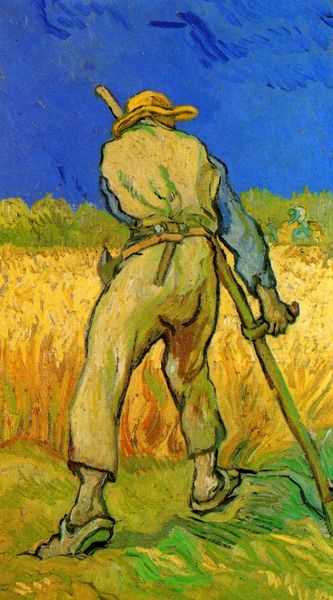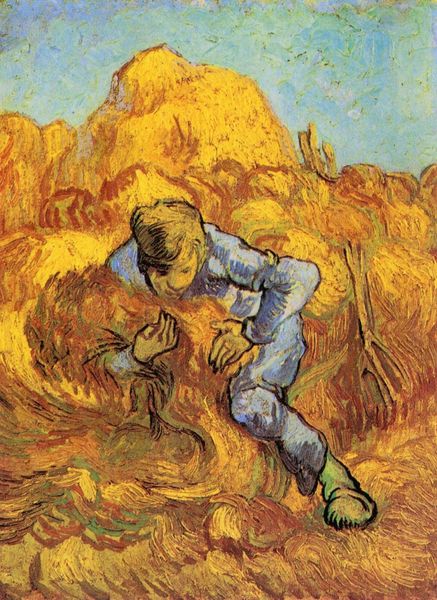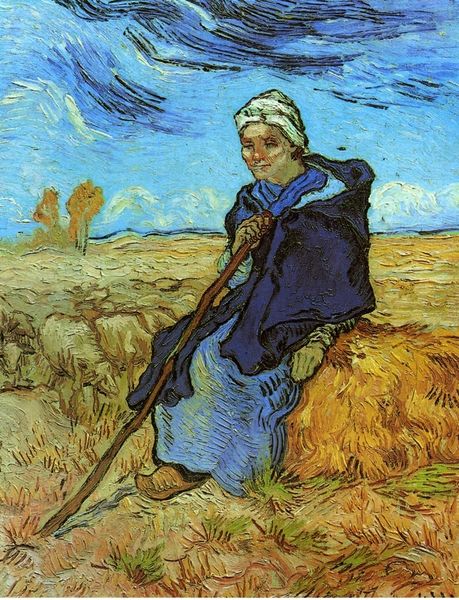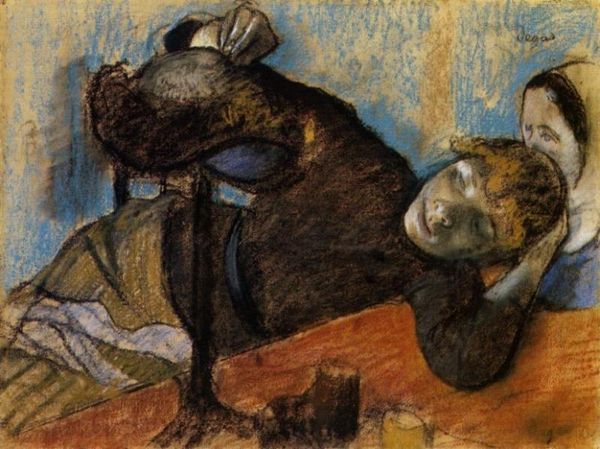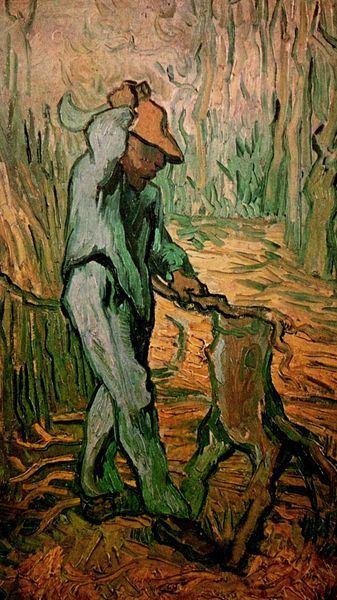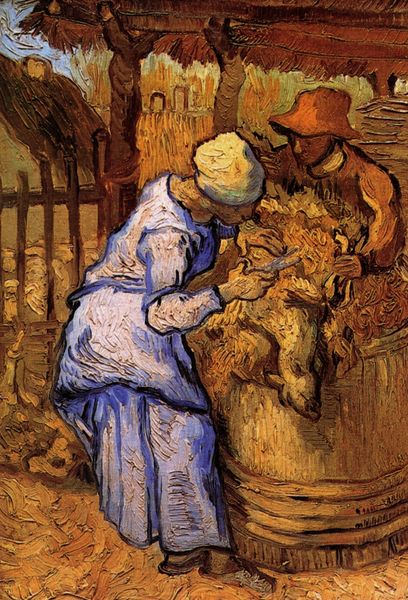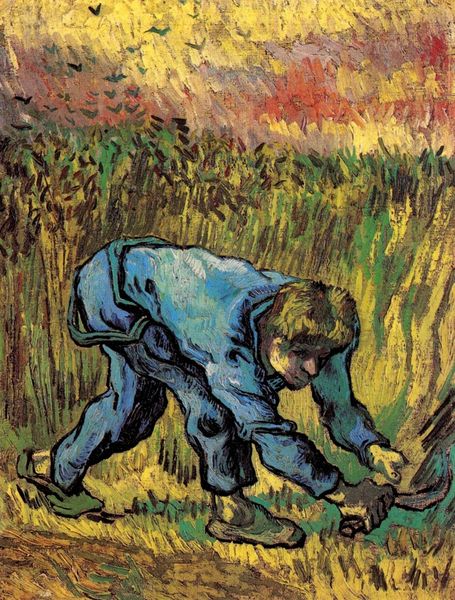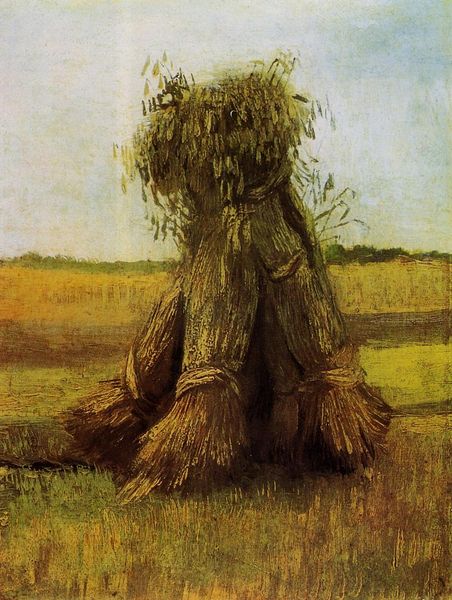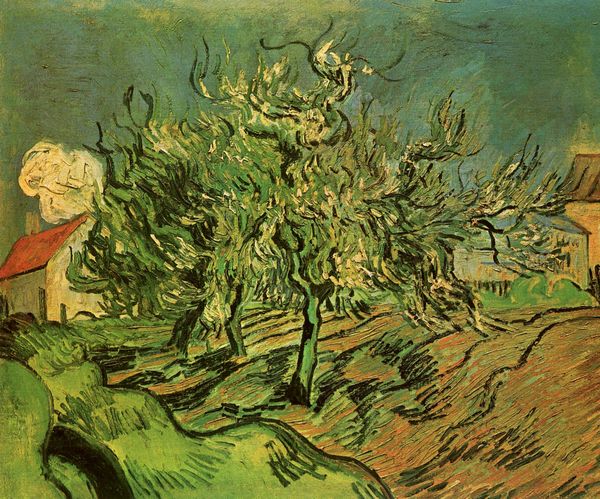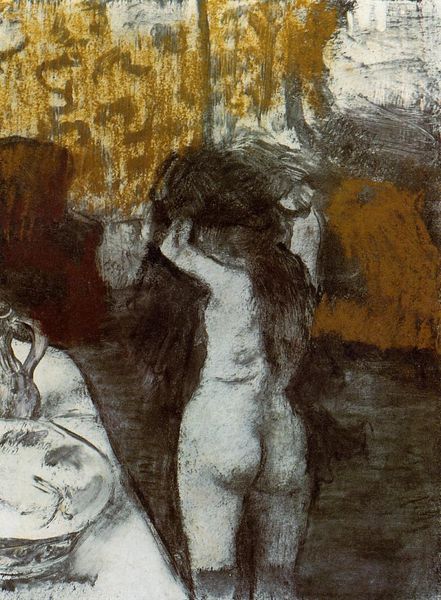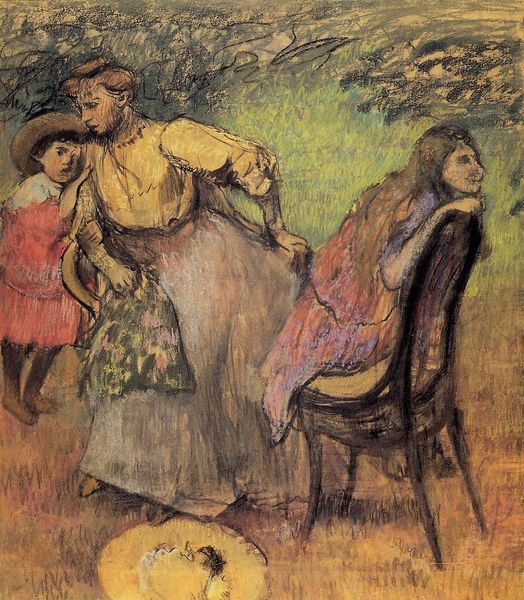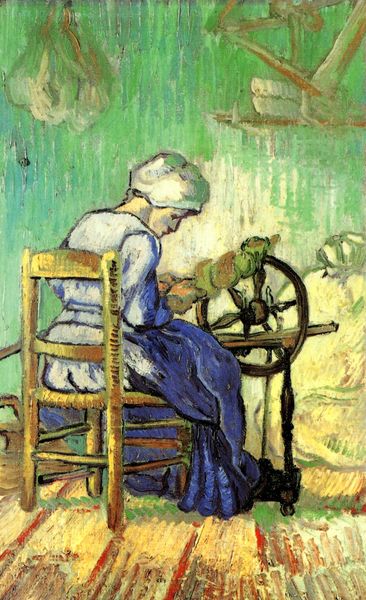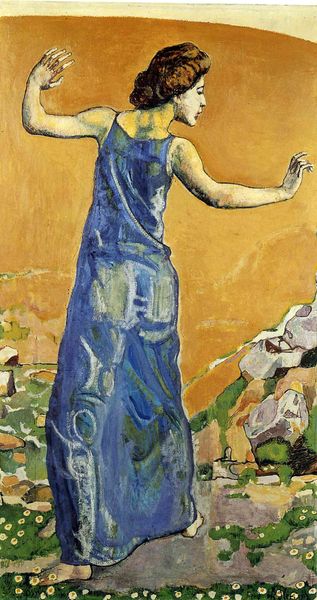
painting, oil-paint, impasto
#
narrative-art
#
painting
#
oil-paint
#
landscape
#
figuration
#
impasto
#
genre-painting
#
post-impressionism
Dimensions: 40.5 x 26.5 cm
Copyright: Public domain
Curator: Here we have Vincent van Gogh’s 1889 painting, “Peasant Woman Cutting Straw after Millet,” currently residing here at the Van Gogh Museum. Editor: The colors strike me first. All those yellows and blues applied with thick impasto give the image a powerful tactile feel and an almost palpable energy. Curator: Van Gogh was deeply influenced by Millet’s depictions of peasant life, which he saw as representing an honest connection to the earth and the dignity of labor. It's hard to miss the social realities represented in the artwork; peasants formed a critical mass in European society back then. Editor: I see that reverence for labor represented, but through the painting's formal elements. The figure dominates the frame. Her rounded back and downward gaze direct the viewer’s eye into the fields of chopped hay. It’s cleverly constructed to evoke that back-breaking toil. Curator: Exactly, and the act of depicting rural laborers elevated their social status within the visual landscape. It reflected socialist leanings common among artists in that era. He actually did several versions based on Millet’s work, reflecting a period of personal artistic exploration through homage and reinvention. Editor: Absolutely. One cannot ignore the structural mirroring between the woman's bent figure and the hay rake and ladder. These near-parallel lines create rhythm and visual consistency that draws you in further and connects her toil with tools and landscape. Van Gogh clearly knew how to orchestrate a powerful composition. Curator: There are art historians that read the subject, which he painted while at Saint-Remy, through the lens of his mental state, which casts new shadows over both its subject and stylistic rendering. Editor: A potent interpretation. I do find the interplay of texture and light incredibly powerful. Curator: Indeed, it offers insight into both his social engagement and artistic self-discovery. Editor: It certainly highlights the ways pure form shapes experience.
Comments
No comments
Be the first to comment and join the conversation on the ultimate creative platform.
